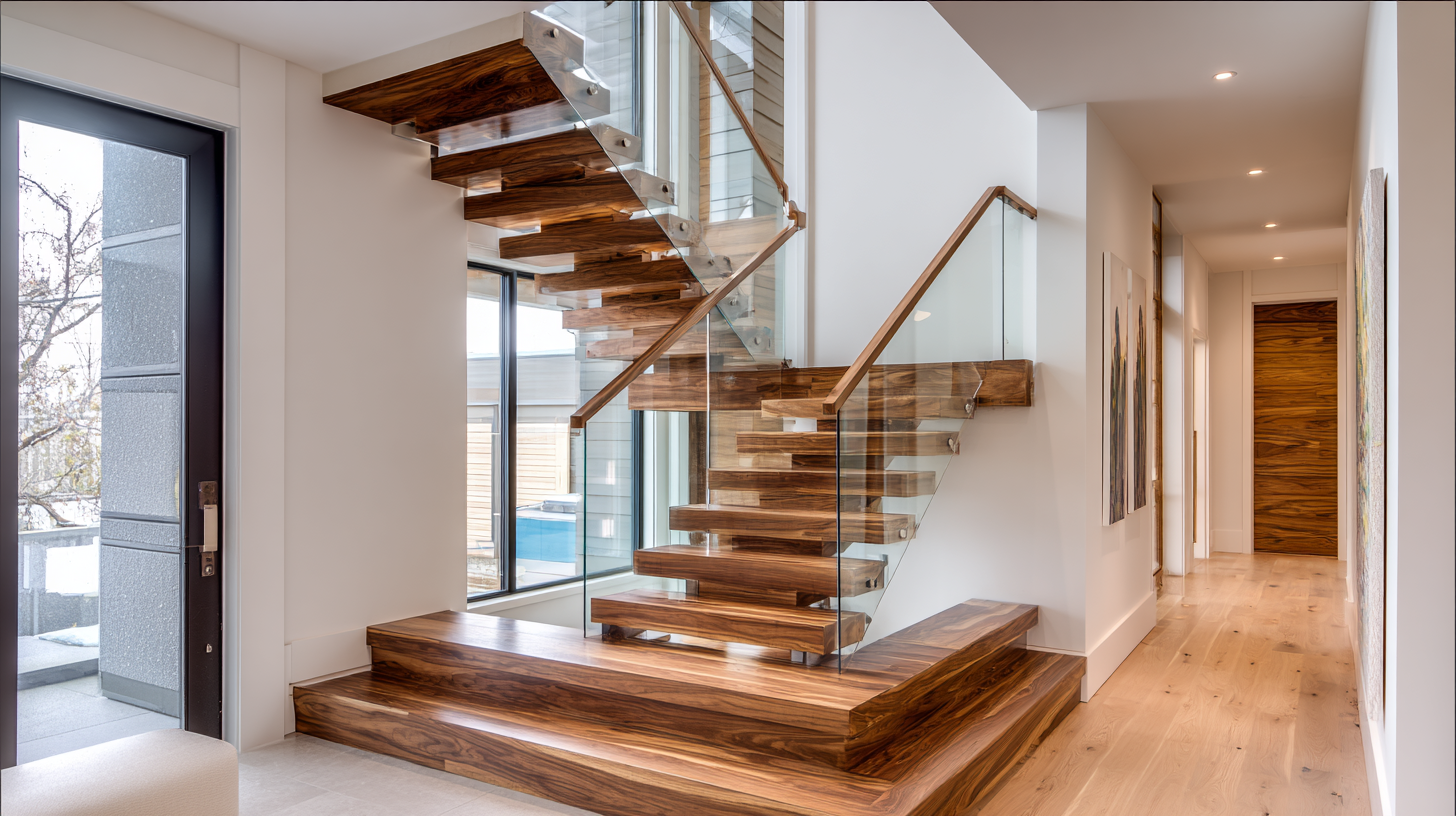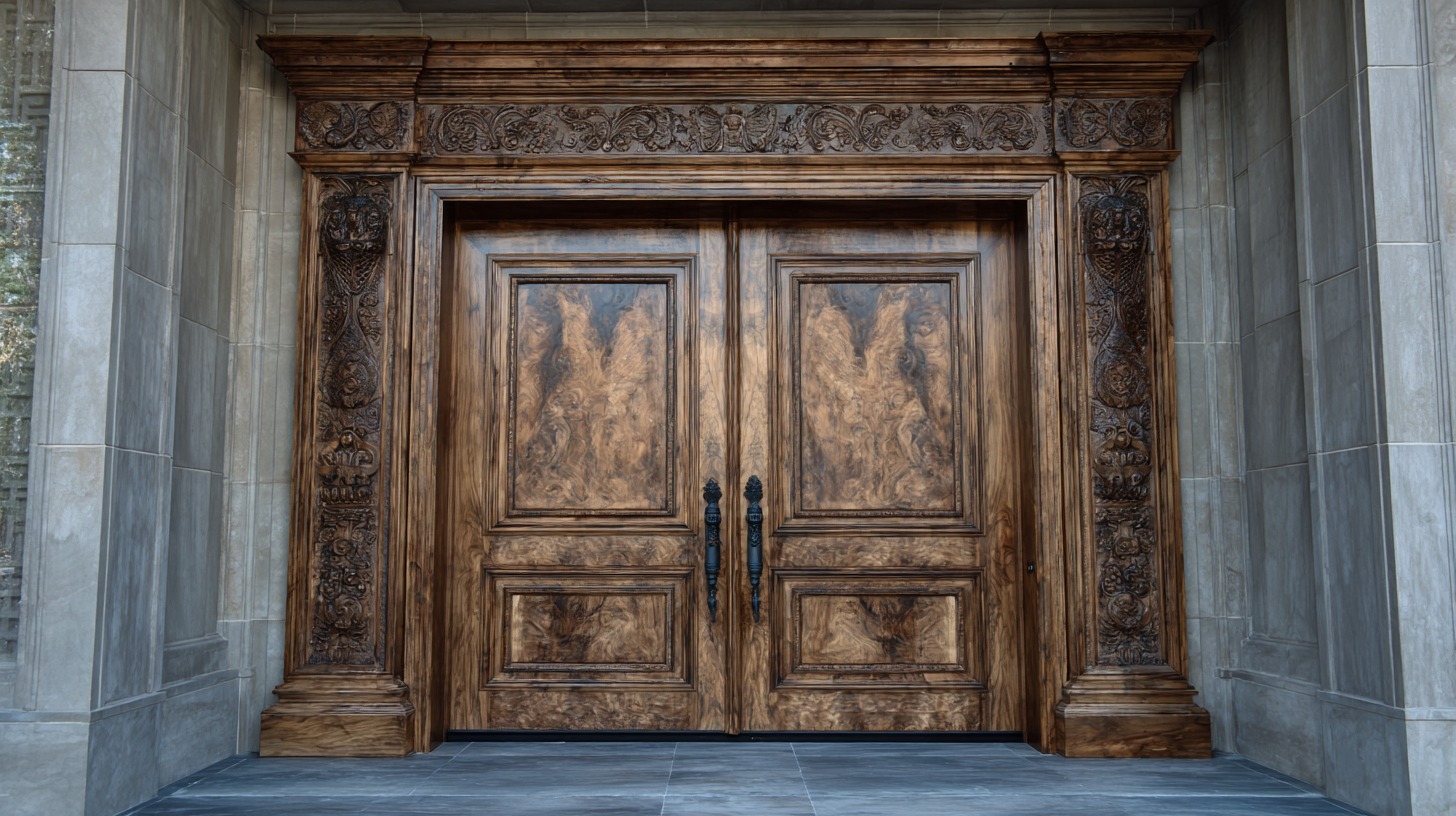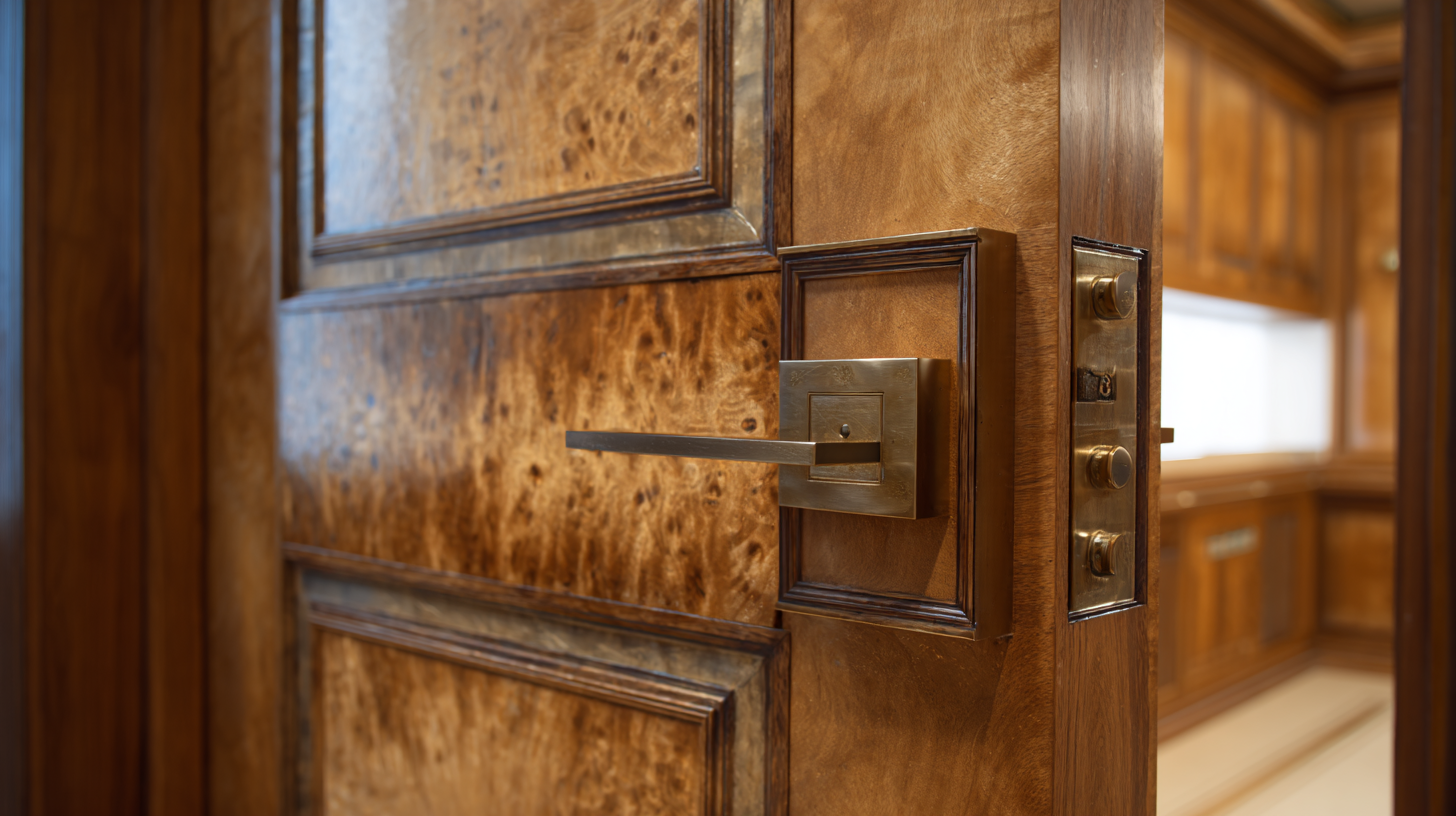Blog
Innovative Trends Shaping the Future of Wood Door Replacements by 2025
As we look towards 2025, the world of wood door replacement is poised for transformative changes driven by innovative trends and technologies. The demand for aesthetically pleasing, durable, and eco-friendly options is reshaping consumer preferences, leading manufacturers to invest in advanced production methods and sustainable materials. In this blog, we will explore the exciting developments in the wood door replacement industry, particularly focusing on how leading factories in China are leveraging cutting-edge techniques to not only meet global export demands but also enhance the overall quality and design of their products. As these trends continue to emerge, homeowners and architects alike will find themselves inspired by the possibilities that modern wood door replacements present, blending tradition with innovation for a brighter, more functional future.

Emerging Designs in Wood Door Replacements: A Look into 2025 Trends
As we approach the year 2025, the world of wood door replacements is undergoing a remarkable transformation driven by innovative designs and sustainable practices. One of the standout trends is the incorporation of eco-friendly materials that not only satisfy aesthetic desires but also align with environmental consciousness. These doors often feature reclaimed wood, giving them a unique character while minimizing waste. This trend speaks volumes about homeowners’ growing preference for sustainability without compromising on style.
Another emerging design trend is the blend of traditional craftsmanship with modern technology. Customization has reached new heights, allowing consumers to create bespoke doors that reflect their personal style. Advanced techniques like CNC machining enable intricate patterns and designs, enhancing both the visual appeal and functionality of wood doors. Furthermore, smart door solutions are gaining traction, integrating security features with sleek designs. This mix of artisanal craftsmanship and high-tech advancements creates a dynamic range of options for discerning homeowners looking for both durability and elegance in their wood door replacements.
Innovative Trends Shaping the Future of Wood Door Replacements by 2025
| Trend | Description | Sustainability Impact | Aesthetic Appeal | Estimated Adoption Rate by 2025 |
|---|---|---|---|---|
| Smart Doors | Incorporating technology for security, automation, and energy efficiency. | High - uses renewable materials and enhances energy efficiency. | Modern and sleek with customizable features. | 35% |
| Biodegradable Materials | Use of materials that decompose naturally, reducing plastic waste. | Very High - significantly lowers environmental impact. | Natural look that blends well with traditional aesthetics. | 25% |
| Customizable Designs | Doors that can be tailored in size, color, and function to meet client needs. | Medium - allows for personal choice and sustainable sourcing. | Highly appealing as it reflects personal style. | 50% |
| Hybrid Materials | Combining wood with synthetic materials for durability without sacrificing aesthetics. | Medium - extends door lifespan and reduces replacement frequency. | Contemporary mix that appeals to diverse tastes. | 40% |
| Artisanal Touches | Hand-crafted designs emphasizing uniqueness and craftsmanship. | Low - artisanal methods may use non-sustainable practices. | Highly valued for bespoke elegance. | 30% |
Sustainable Materials: The Future of Eco-Friendly Wood Doors
As the demand for eco-friendly solutions escalates, sustainable materials are poised to lead the way in the evolution of wood door replacements. By 2025, we will see advancements in the use of reclaimed wood, which not only preserves forests but also adds unique character to homes. Designers and manufacturers are increasingly prioritizing timber sourced from responsibly managed forests, ensuring that wood doors boast both quality and environmental consciousness.

Choosing sustainable materials isn’t just beneficial for the planet; it also offers homeowners practical advantages. When selecting eco-friendly wood doors, consider opting for products that feature low-VOC finishes. This reduces harmful emissions in your home, creating a healthier living environment. Additionally, look for doors with superior insulation properties, which can significantly enhance energy efficiency and reduce heating costs.
When embarking on your wood door replacement journey, remember to consult with professionals who specialize in sustainable building practices. They can guide you towards materials that are not only beautiful but also align with eco-friendly standards. Investing in these innovative solutions not only elevates your home’s aesthetic but also contributes to a more sustainable future.
Technological Innovations Revolutionizing Wood Door Manufacturing
The wood door manufacturing industry is witnessing a transformative era driven by cutting-edge technological innovations. From smart manufacturing processes that utilize automated machinery to advanced materials that enhance durability and aesthetics, the landscape is shifting rapidly. Technologies like 3D printing and laser cutting have enabled manufacturers to create intricate designs with precision, reducing waste and expediting production times. These innovations empower customers to customize their door replacements, ensuring that each piece not only meets functional requirements but also aligns with personal style.
Furthermore, the integration of smart technology into wood doors is setting new standards for security and convenience. With features such as smart locks and connectivity to home automation systems, these doors are becoming more than just functional entryways; they are evolving into essential components of a smart home ecosystem. As sustainability continues to be a priority, manufacturers are also exploring eco-friendly practices and materials, ensuring that the production of wood doors is both responsible and innovative. By 2025, the confluence of these advancements will not only enhance the practicality but also the visual appeal of wood door replacements, redefining expectations for homeowners and builders alike.

Chinese Manufacturing Excellence: A Benchmark for Global Wood Door Exports
Chinese manufacturing has long been synonymous with quality and efficiency, and its influence on the global wood door export market is increasingly notable. According to a 2022 report by Grand View Research, the global wooden door market is projected to reach USD 121.8 billion by 2025, with China leading the production landscape. In 2021 alone, China accounted for approximately 30% of the world's wood door exports, reflecting its capabilities in delivering both mass production and bespoke solutions tailored to international standards.
The rise of advanced manufacturing technologies in China, such as automated machinery and precision-cutting tools, has enabled manufacturers to streamline production while maintaining high quality. This has resulted in a reduction of lead times and costs, making Chinese wood doors more competitive on the global stage. Furthermore, Chinese manufacturers are increasingly adopting sustainable practices, employing eco-friendly materials and processes to meet the growing demand for green building solutions. This commitment to sustainability aligns with global trends and enhances their reputation as a benchmark for quality in wood door replacements by 2025.
Consumer Preferences Shaping the Evolution of Wood Door Styles and Functionality
As we approach 2025, the preferences of consumers are significantly influencing the evolution of wood door styles and functionality. Today's homeowners prioritize not only aesthetics but also practicality, leading to a transformation in how wood doors are designed and used. Features such as energy efficiency, enhanced security measures, and customizable options are becoming increasingly popular among buyers. This trend indicates a shift towards personalization, where consumers expect products that reflect their individuality and lifestyle.
Moreover, the growing awareness of sustainability is impacting consumer choices in the wood door market. Eco-friendly materials and production processes are now paramount, as buyers seek to minimize their environmental footprint. The fusion of traditional craftsmanship with modern technology is another notable development, allowing for innovations that meet both durability and aesthetic demands. As these trends continue to shape the wood door replacement landscape, manufacturers must adapt to the changing expectations of consumers, ensuring that their offerings align with the values of quality, sustainability, and personalization.
Innovative Trends in Wood Door Replacements by 2025
This chart illustrates consumer preferences influencing wood door styles and functionality as we approach 2025. The data showcases the percentage of consumers favoring different design elements and functionalities.
